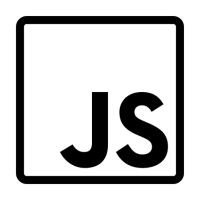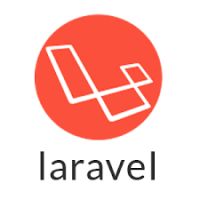Explore our complete guide to the top backend frameworks, offering insights to enhance your web development projects.
More...
In this complete guide, we will explore the world of backend frameworks and provide you with valuable insights to help you make informed decisions. Whether you're a beginner or seasoned developer, this guide will equip you with the knowledge you need to succeed. Let's dive in!
Understanding Backend Frameworks
In web development, a backend framework refers to a set of tools and libraries that help developers build server-side logic. Unlike client-side frameworks, which primarily deal with the user interface and interaction, backend frameworks prioritize server-side functionality and data management. By utilizing backend frameworks, developers can effectively handle tasks such as database interactions, authentication, and API integrations, among others.
At its core, a backend framework is essentially a collection of pre-written code that simplifies the development process and improves efficiency. Think of it as a pre-built foundation that developers can leverage to create custom web applications. Backend frameworks come in various programming languages, including Python, Ruby, PHP, and JavaScript, among others.
Server-Side vs. Client-Side Frameworks
It's essential to understand the difference between server-side and client-side frameworks.
While backend frameworks primarily cater to server-side processing, client-side frameworks deal with the front-end or user interface aspects of web development. Client-side frameworks such as React, Vue.js, and AngularJS, help developers to create responsive and dynamic web applications by managing interactions between the user and the web page.
On the other hand, server-side frameworks prioritize server-side logic and data management. They are responsible for handling user authentication, managing user sessions, and processing database requests. The two frameworks complement each other, and some frameworks, such as Node.js, can function as both server-side and client-side frameworks.

Benefits of Using Backend Frameworks
Backend frameworks have become the backbone of modern web development, providing developers with a range of benefits that can improve the efficiency, scalability, and security of their applications. Here are some of the key advantages of using backend frameworks:
Benefits | Description |
|---|---|
Efficiency | Backend frameworks offer pre-built modules and libraries that can streamline the development process, reducing development time and costs. Developers can focus on writing the core business logic of their application rather than re-creating standard functionality. |
Scalability | Backend frameworks are designed to handle the growing demands of web applications, with features such as load balancing, caching, and clustering. This allows for better management of resources and improved performance as user traffic increases. |
Security | Backend frameworks come with built-in security features such as encryption, validation, and authentication. Developers can also take advantage of third-party security plugins and libraries to further enhance the security of their applications. |
Overall, using backend frameworks can significantly optimize the development process and improve the performance of web applications. By reducing development time, managing resources effectively, and enhancing security, developers can focus on delivering a seamless user experience for their customers.
Top Backend Frameworks for Web Development
Backend frameworks are essential for building robust web applications. They provide the foundation for server-side programming, allowing developers to concentrate on building the application logic rather than writing the low-level code that interacts with the database and other systems.
Here are the top backend frameworks for web development:
Framework | Language | Pros | Cons |
|---|---|---|---|
Complete and well-documented framework, excellent for rapid development | May not be the most performant option, may require additional dependencies for specific features | ||
 | Highly productive and easy to learn, includes many high-level abstractions for common tasks | May require additional configuration for larger projects, can be slower due to Ruby's interpreted nature | |
 | Minimalist and flexible, ideal for small to mid-sized projects or APIs | May require additional packages for certain features, can be less organized for larger projects | |
 |  | Well-documented, modern framework with many features and a large community | May be slower for larger projects, requires installation of additional extensions to run some features |
Each of these frameworks has its own distinctive features, advantages, and drawbacks, making them suitable for different types of web development projects. Choose the one that best fits your needs based on factors such as project size, complexity, and performance requirements.
Comparing Backend Frameworks - Key Features and Use Cases
After introducing the most popular backend frameworks for web development in the previous section, it's time to compare them and analyze their key features and use cases. By analyzing these factors, you'll be able to make an informed decision when choosing a backend framework. The table below provides a visual comparison of the top backend frameworks, including their programming languages, performance, community support, features, and use cases:
Backend Framework | Programming Language | Performance | Community Support | Features | Use Cases |
|---|---|---|---|---|---|
Python | High performance | Active and supportive community | Admin panel, authentication, ORM | Content management systems, e-commerce, social networking | |
Ruby | Fast and scalable | Large and supportive community | MVC architecture, routing, RESTful API | Web applications, e-commerce, content management systems | |
JavaScript | Lightweight and flexible | Active and growing community | Middleware support, routing, templating engines | APIs, real-time applications, microservices | |
PHP | High performance | Active community with frequent releases | Authentication, routing, Eloquent ORM | Web applications, e-commerce, content management systems |
The factors to consider when comparing backend frameworks are:
1. Programming Languages
One of the most significant factors to consider when choosing a backend framework is the programming language it uses. While some frameworks use popular languages like Python and Ruby, others may require you to learn a new language altogether. It's important to choose a framework that aligns with your language preferences and expertise.
2. Performance
Performance is another crucial aspect to analyze when comparing backend frameworks. Factors like response time, scalability, and server load can greatly impact the user experience of your web application. Some frameworks are optimized for high performance, while others may require extra configuration to achieve optimal results.
3. Community Support
The strength of a framework's community can greatly influence the success of your development experience. A thriving community can provide you with access to helpful resources, plugins, and tutorials. It can also offer bug fixes and security updates regularly. Ensure you choose a framework that has an active community.
4. Features
Backend frameworks come with different features that cater to the unique needs of your web development projects. Some frameworks offer built-in features like caching and authentication, while others may require you to install additional plugins. Carefully analyze the provided features to ensure that they align with your project requirements and goals.
5. Use Cases
Finally, it's important to consider the use cases of each framework. Some frameworks are designed for specific purposes and industries, such as e-commerce or social networking. Analyze the use cases of each backend framework and choose the one that aligns with your project's niche.
Challenges And Solutions In Backend Framework Development
Despite the benefits of using backend frameworks, developers may encounter difficulties during the development process. In this section, we'll explore common challenges and provide solutions and troubleshooting tips to overcome them.
Performance Issues
In some cases, backend frameworks may generate code that results in poor performance. Slow loading times and server crashes can negatively impact user experience and harm your website's reputation.
Challenge | Solution |
|---|---|
Large database queries | Optimizing database queries through indexing and caching |
Heavy use of plugins and middleware | Reducing dependencies and streamlining codebase |
Inefficient code implementation | Refactoring code for improved performance |
Debugging
Backend framework development can be complex, and debugging issues can be time-consuming and frustrating. It's important to have a systematic approach to error detection and testing.
- 1Use debugging tools such as loggers and error reporting software to identify errors
- 2Break down code into smaller components to isolate issues
- 3Implement automated testing to catch errors early on in the development process
Optimizing Backend Code
Writing clean, efficient code is crucial for backend framework development, but it can be challenging to achieve. Here are some best practices for optimizing your backend code:
- 1Avoid hardcoding data and use variables instead
- 2Minimize database queries by consolidating queries and using caching
- 3Eliminate unnecessary code and dependencies
By following these tips and techniques, developers can overcome challenges and optimize backend framework development for smooth and efficient web application deployment.
Best Practices for Backend Framework Development
Developing web applications with backend frameworks requires careful consideration of various programming and organization practices. Here are some of the best practices you can follow to ensure a smooth development process and optimal outcomes:
 | 1. Organize Your CodebaseStructured and organized code is critical for backend development. Use a modular approach to separate concerns and ensure code reusability. Adopt a standard naming convention and place related files in dedicated folders. Always document your code to enable other developers to understand your work. |
 | 2. Use Efficient Database StructuresImplementing efficient database structures is crucial to efficient backend development. Choose the right database management system based on your project's requirements. Define clear relationships between tables and use indexes to improve query performance. Regularly optimize your database to improve performance. |
 | 3. Implement Reliable Security MeasuresSecurity is critical for every web application. Follow industry-standard security protocols to protect your backend from cyber-attacks. Use robust password policies, data encryption, and strictly control user access rights. Regularly test your application for vulnerabilities and apply security patches promptly. |
 | 4. Maintain High Code QualityWrite clean, well-structured code with proper documentation and comments. Ensure that your code is maintainable, testable, and scalable. Regularly refactor your code to eliminate redundant sections, reduce complexity, and improve performance. Use automated testing frameworks to detect and fix errors as early as possible. |
 | 5. Optimize PerformancePerformance is critical for web applications. Optimize your application by using caching, minimizing network requests, and reducing database queries. Use profiling tools to detect and fix performance bottlenecks. Regularly monitor your application's performance using tools like New Relic, Loggly, or Datadog. |
 | 6. Follow a Version Control SystemVersion control is an essential part of any development process. Use Git, SVN, or other version control systems to manage your codebase. Keep track of code changes, collaborate with other developers, and revert to previous versions if needed. Use branches to experiment with new features or bug fixes without impacting the main codebase. |
Following these best practices will help you to develop high-quality web applications with efficient and maintainable backend code. By using these tips, you can successfully build robust web applications that meet the needs of your users and stakeholders.
Future Trends in Backend Frameworks
As technology continues to evolve at breakneck speed, it's important for web developers to stay up-to-date with the latest advancements in backend frameworks. Here are some of the future trends that we can expect to shape the world of web development:
1. The Rise of Serverless Architectures
Serverless architecture is a cloud computing model that eliminates the need for developers to manage and maintain servers. With serverless computing, developers can focus on writing code and building applications without worrying about infrastructure. This approach is set to gain popularity in the coming years, allowing for greater flexibility and scalability in backend development.
2. Adoption of Machine Learning Capabilities
Machine learning capabilities are becoming increasingly common in backend frameworks, allowing for smarter and more efficient data processing. With machine learning, developers can automate routine tasks, minimize errors, and improve the accuracy of predictions and recommendations. As machine learning technologies continue to evolve, we can expect to see more sophisticated applications of this approach in backend development.
3. Integration with Blockchain Technology
Blockchain technology is rapidly gaining popularity for its potential in creating secure and transparent systems. In the world of backend development, blockchain technology can be used for creating decentralized and tamper-proof applications. We can expect to see more integration of blockchain technology in backend frameworks, enabling developers to build more secure and trustworthy applications.
4. Increased Focus on Cybersecurity
Cybersecurity threats are becoming increasingly common, and backend frameworks must keep up. In the coming years, we can expect to see more emphasis on cybersecurity in backend development, with frameworks focusing on providing better protection against attacks and vulnerabilities. This will help to ensure that web applications are secure and can withstand potential threats.
5. Greater Use of Microservices
Microservices are a software development approach that breaks down complex applications into smaller and more manageable services. This approach allows for faster development and deployment, as well as greater flexibility and scalability. We can expect to see more use of microservices in backend frameworks, helping developers to create more modular and flexible applications.
These are just a few of the future trends that we can expect to see in backend frameworks. As technology continues to evolve, it's important to stay up-to-date with the latest advancements and adopt new approaches that can enhance the development process and improve the performance of web applications.
Summary
Backend frameworks have become an essential component in modern web development. By leveraging the power of these frameworks, developers can streamline their development process, enhance application performance, and improve security and scalability. Throughout this guide, we explored the fundamentals of backend frameworks, their benefits, and the top options available in the market.
We also provided valuable insights into the key features and use cases of each framework, enabling you to make informed decisions based on your project requirements. By following best practices and troubleshooting tips, you can ensure optimal results throughout the development process.
Looking ahead, the future of backend frameworks looks promising, with the adoption of serverless architectures and the integration of machine learning capabilities. By staying informed about the latest trends and advancements, you can continue to unlock the potential of backend frameworks in your web development projects.
Join us on this enlightening journey as we continue to explore the world of backend frameworks and their potential to transform the modern web development landscape.
FAQ
What are backend frameworks?
Backend frameworks are software libraries or frameworks that provide the necessary tools and functionality to build the server-side components of web applications. They help developers streamline the development process and handle tasks such as routing, database management, and authentication.
What is the difference between server-side and client-side frameworks?
Server-side frameworks primarily focus on the backend logic of an application and handle tasks such as request processing, database management, and server communication. On the other hand, client-side frameworks are responsible for the user interface and interactions within the web browser, allowing for dynamic and interactive experiences.
What are the benefits of using backend frameworks?
Using backend frameworks offers several advantages, including improved efficiency in development, scalability to handle increasing traffic, and enhanced security measures. These frameworks provide pre-built components and libraries, allowing developers to focus on the core functionality of their applications.
What are some popular backend frameworks for web development?
Some popular backend frameworks for web development include Django (Python), Ruby on Rails (Ruby), Express.js (JavaScript), and Laravel (PHP). These frameworks have a strong community support, extensive documentation, and a wide range of features and capabilities.
How do I choose the right backend framework for my project?
Choosing the right backend framework depends on various factors such as programming language familiarity, project requirements, performance needs, and community support. It is recommended to evaluate the features, scalability, and community support of different frameworks to find the one that aligns best with your project goals.
What are some best practices for backend framework development?
Some best practices for backend framework development include organizing your codebase using modular design patterns, implementing proper error handling and logging mechanisms, optimizing database queries for performance, and regularly updating and patching your framework and dependencies for security.
What are common challenges in backend framework development and how to overcome them?
Common challenges in backend framework development include performance bottlenecks, debugging complex issues, and maintaining code quality. To overcome these challenges, it is important to conduct thorough testing, optimize code for performance, utilize debugging tools, and adhere to coding best practices.
What are the future trends in backend frameworks?
The future of backend frameworks is expected to include advancements in serverless architectures, increased adoption of microservices, integration of artificial intelligence and machine learning capabilities, and improved support for real-time applications. These trends aim to enhance scalability, agility, and responsiveness in web development.
